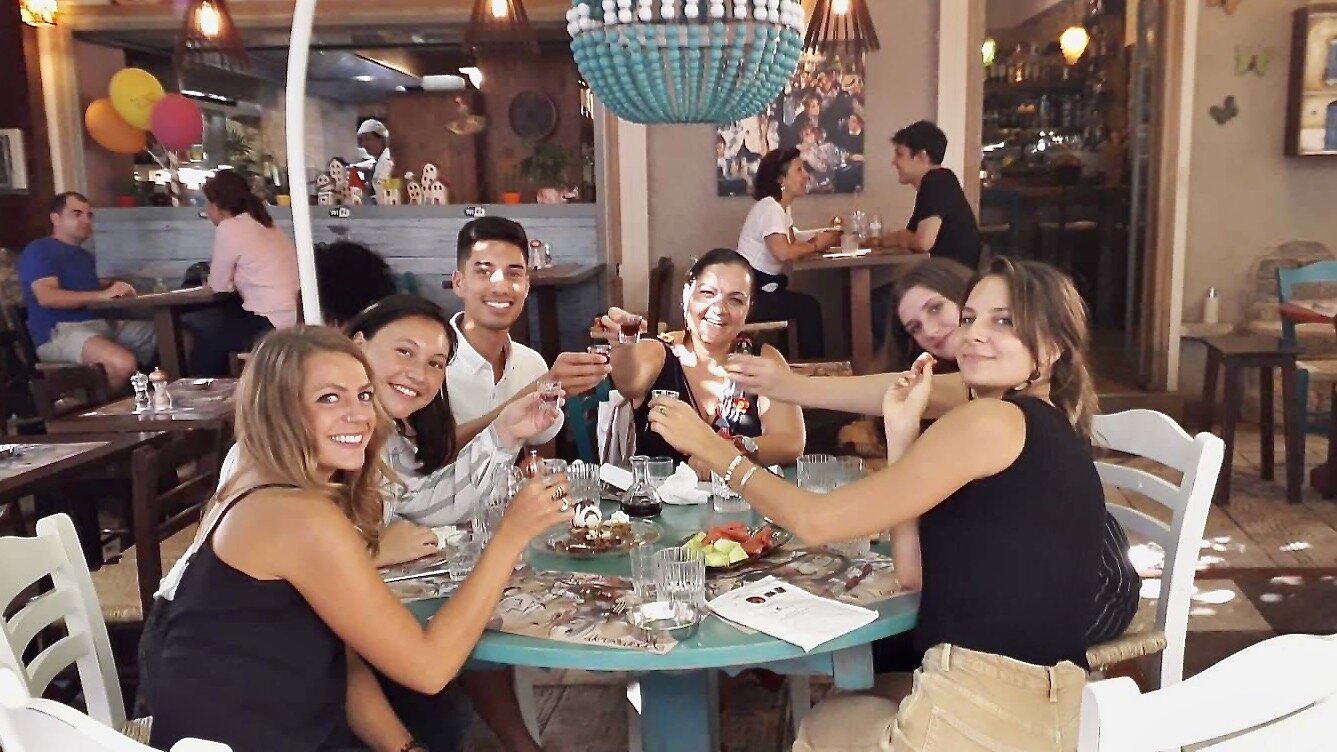
Design Research, Exhibit Design, UX, UI, Branding
An immersive restaurant experience with a rotating culture theme
Immigrants often struggle to overcome cultural barriers when building social relationships. However, sharing different food traditions allows people to open up about their own cultures and themselves.
That’s why I designed Four Corners: Global Food Experience, to create opportunities for cultural and personal sharing, thereby fostering stronger social relationships and feelings of belonging.
The Four Corners Experience

Research Process
Context
After studying and working abroad for 9 months, I noticed some inherent biases and strained relationships between people of neighboring countries. I saw a huge opportunity to apply design principles to navigate cultural barriers and overcome biases.
Challenge and Initial Investigations
Navigating Cultural Barriers
Each person has a different framework of knowledge, norms, and traditions, shaped by the culture they grew up in. When people from different cultures interact, there can be a disconnect in these basic understandings, which is known as culture shock or cultural barriers.
Through initial investigations, I focused in on immigrants because many immigrants encounter cultural barriers on a regular basis. If I could draw insights from and help this population that struggles the most with this issue, I felt like my advancements could
Research Question
How might we enable immigrants to overcome cultural barriers?
Through initial investigations, I found that immigrants face cultural barriers on a daily basis. Therefore, I wanted to explore some of their current challenges and solutions. I interviewed experts, talked to immigrants of all ages and backgrounds, and conducted several design research activities.
Research Insights
Cultural sharing promotes deeper understanding and connection.
Immigrants want to share their culture.
Food helps people share culture and create stronger social relationships.
Ideation
How can food bring people of diverse backgrounds together?
In order to tackle this complex goal, I couldn’t limit myself to just physical product, but also experiences, interfaces, and more. I then took several concepts to potential users to obtain feedback.
Concept
Sharing your culture through food
After several rounds of feedback from potential users, an immersive restaurant experience–through which participants can explore a featured food culture–showed great potential. By giving immigrants an opportunity to bring their friends or loved ones into the context of their culture, they would be better able to share about where they come from and who they are, leading to more mutual understanding. In addition, engaging all of the senses through the tastes and smells of the food and marketplace, as well as seeing and interacting with a space that feels like you’re in another part of the world, not only allows an “outsider” to gain a richer understanding, but also triggers memories of the individuals from there, prompting them to share more.
Features
Food acts as a gateway into culture and personal experiences.
Featured culture changes throughout year to represent many cultures.
Activities encourage personal and cultural sharing to strengthen relationships.
Designing the Experience
For the sample design, I worked with South Indian immigrants to determine what key aspects of culture needed to be present in the restaurant and exhibit. I built out both the flow and visual aspects of the experience.
Experience Map
Designing the Physical Spaces
To design the Marketplace Room and the Dining Room, I worked with representatives from South India to develop how the colors, decorations, sounds, and smells would immerse and transport the guests in the authentic feeling of South India. I also had to consider how people would move around the space.
The App Interface
See more about my UX and app design process here.







































